Advertisements
Advertisements
प्रश्न
Define 1 volt PD.
Define one volt potential difference between two points in an electric field.
उत्तर
The potential difference between two points is said to be 1 volt if 1 joule of work is done in moving 1 coulomb of electric charge from one point to another.
1 volt (V) = `(1 "joule (J)")/(1 "coulomb (C)")`
संबंधित प्रश्न
A metal rod of square cross-sectional area A having length l has current I flowing through it when a potential difference of V volt is applied across its ends (figure I). Now the rod is cut parallel to its length into two identical pieces and joined as shown in figure II. What potential difference must be maintained across the length of 2l. so that the current in the rod is still I?

Explain the principle of a device that can build up high voltages of the order of a few million volts.
Is there any restriction on the upper limit of the high voltage set up in Van de Graff generator machine? Explain.
A 100 pF capacitor is charged to a potential difference of 24 V. It is connected to an uncharged capacitor of capacitance 20 pF. What will be the new potential difference across the 100 pF capacitor?
Find the potential difference `V_a - V_b` between the points a and b shown in each part of the figure.
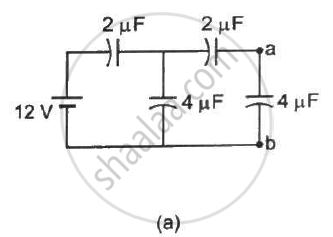
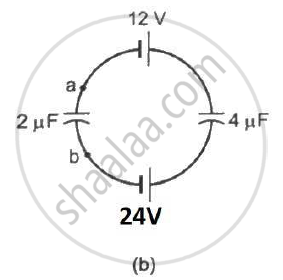
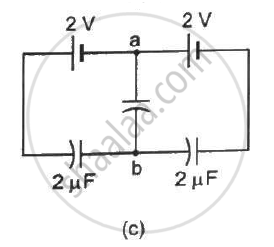
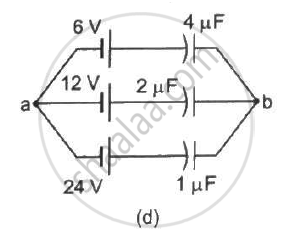
Find the potential difference between the points A and B and between the points B and C of the figure in steady state.

A charge of 20 µC is placed on the positive plate of an isolated parallel-plate capacitor of capacitance 10 µF. Calculate the potential difference developed between the plates.
The capacitance between the adjacent plates shown in figure is 50 nF. A charge of 1⋅0 µC is placed on the middle plate. (a) What will be the charge on the outer surface of the upper plate? (b) Find the potential difference developed between the upper and the middle plates.
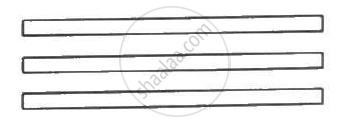
Two capacitors of capacitance 20⋅0 pF and 50⋅0 pF are connected in series with a 6⋅00 V battery. Find (a) the potential difference across each capacitor and (b) the energy stored in each capacitor.
Answer the following question:
Find the expression for the resistivity of a material.
What will be the potential difference in the circuit when direct current is passed through the circuit?
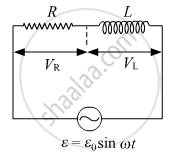
The unit of potential difference as used in electrical circuits is ________.
Two metal pieces having a potential difference of 800 V are 0.02 m apart horizontally. A particle of mass 1.96 × 10–15 kg is suspended in equilibrium between the plates. If e is the elementary charge, then charge on the particle is ______.
On moving a charge of Q coulomb by X cm, W J of work is done, then the potential difference between the points is ______.
A and B are two points in an electric field. If the work done in carrying 4.0C of electric charge from A to B is 16.0 J, the potential difference between A and B is:
A bullet of mass of 2 g is having a charge of 2 µc. Through what potential difference must it be accelerated, starting from rest, to acquire a speed of 10 m/s.
Work done in moving a unit positive charge through a distance of x meter on an equipotential surface is:-
If potential difference between the two ends of a metallic wire is doubled, drift speed of free electrons in the wire ______.
